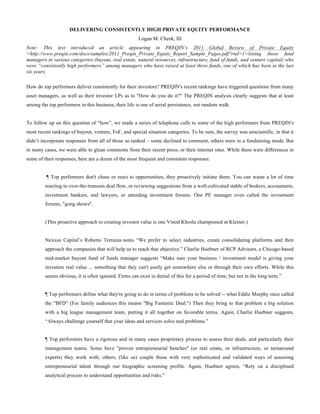The document discusses factors that top private equity fund managers employ to consistently deliver high returns to investors. It summarizes responses from interviews with several top performers. Some common factors cited include proactively initiating opportunities rather than reacting to deals, having a rigorous process to assess management teams and deals, specializing in specific sectors, getting hands-on involved with portfolio companies, managing capital levels to avoid diminishing returns, carefully selecting sectors and markets, learning from proven solutions elsewhere, mitigating cultural and risk factors when operating internationally, and avoiding deals that exploit workers or harm the environment.



